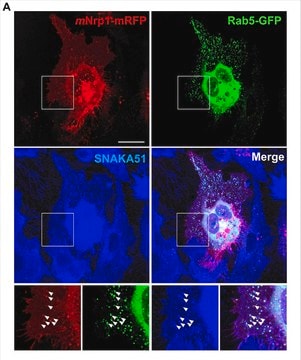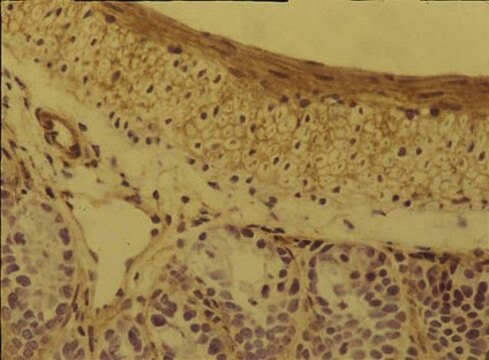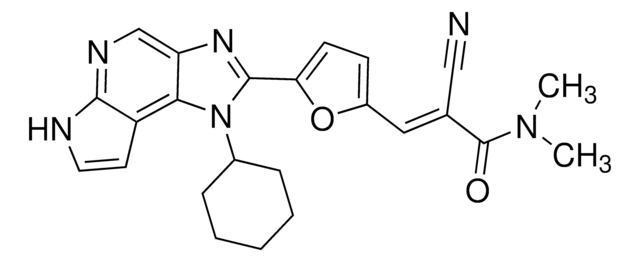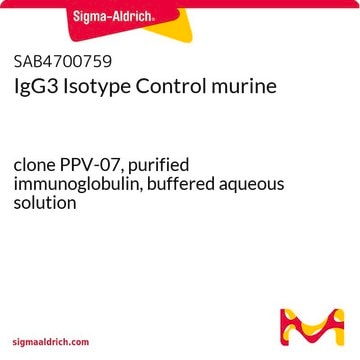MAB1956Z
Anti-Integrin αVβ1 Antibody
CHEMICON®, mouse monoclonal, P1D6
Sinônimo(s):
CD49e, MAB1956
About This Item
Produtos recomendados
Nome do produto
Anti-Integrin α5 Antibody, clone P1D6, azide free, clone P1D6, Chemicon®, from mouse
fonte biológica
mouse
Nível de qualidade
forma do anticorpo
purified antibody
tipo de produto de anticorpo
primary antibodies
clone
P1D6, monoclonal
reatividade de espécies
human
fabricante/nome comercial
Chemicon®
técnica(s)
immunohistochemistry: suitable
Isotipo
IgG3
nº de adesão NCBI
nº de adesão UniProt
Condições de expedição
wet ice
modificação pós-traducional do alvo
unmodified
Informações sobre genes
human ... ITGA5(3678)
Descrição geral
Especificidade
Aplicação
MAB1956Z is not reactive with the denatured alpha 5 subunit. For immunoblotting, a dot blot is suggested as an alternative to western blotting.
Cell Structure
Integrins
forma física
Armazenamento e estabilidade
Nota de análise
Widely expressed, ovary
Outras notas
Informações legais
Exoneração de responsabilidade
Não está encontrando o produto certo?
Experimente o nosso Ferramenta de seleção de produtos.
Código de classe de armazenamento
12 - Non Combustible Liquids
Classe de risco de água (WGK)
WGK 2
Ponto de fulgor (°F)
Not applicable
Ponto de fulgor (°C)
Not applicable
Certificados de análise (COA)
Busque Certificados de análise (COA) digitando o Número do Lote do produto. Os números de lote e remessa podem ser encontrados no rótulo de um produto após a palavra “Lot” ou “Batch”.
Já possui este produto?
Encontre a documentação dos produtos que você adquiriu recentemente na biblioteca de documentos.
Active Filters
Nossa equipe de cientistas tem experiência em todas as áreas de pesquisa, incluindo Life Sciences, ciência de materiais, síntese química, cromatografia, química analítica e muitas outras.
Entre em contato com a assistência técnica








